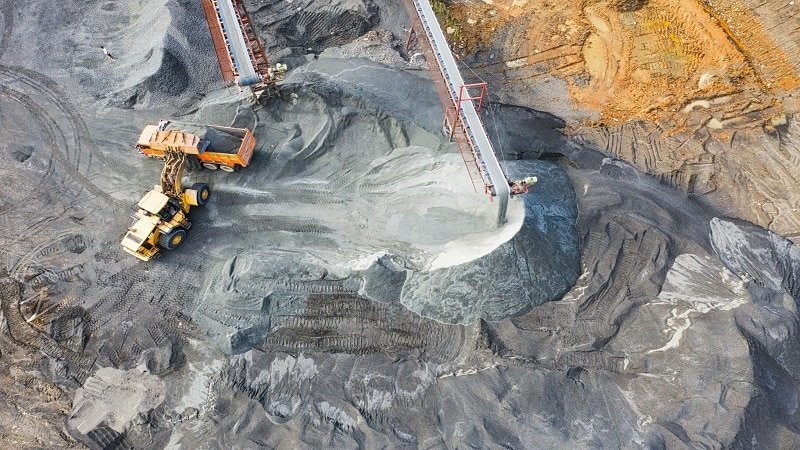How Is Gold Mined?

Gold mining is one of the toughest jobs out there. It requires you to work long hours, carrying heavy tools and equipment in all types of weather. You have to be strong enough to withstand the physical strain that comes with being on your feet for days at a time. And as if that wasn’t hard enough, you’re often required to do it while breathing in toxic fumes from the mercury used during the extraction process.
The need for gold has always been high throughout history; this precious metal has had many uses across many cultures and civilizations since its discovery thousands of years ago. The most common use of gold today is in jewelry-making. People invest in gold rings, necklaces or bracelets as they complement our outfits and make us look more glamorous.
In this blog post, we will discuss different types of gold mines and how gold is mined.
Types of Gold Mines
Gold is a precious metal that has been mined for centuries. It’s used in jewelry, electronics, and many other things we use every day. But how does it get there?
Gold mining is the process of extracting gold from its ore to create pure gold bullion bars or coins.
There are three main types of gold mines: underground, open-pit, and dredge operations.
- Underground mines require significant investment in machinery because they’re hard to get into but also produce more gold than any other type of mine over time.
- Open-pit mines can be easier to develop but have lower production rates than underground mines do.
- Dredges are only viable when water levels are low enough for them to work well.
Mining Techniques
Placer Mining
The first placer gold mining in the United States took place on the American River, near Sacramento, California. This was back in 1848 and since then, placer mining has been popular all over the world for centuries. It is a technique that many people use to find precious metals like gold or silver because it is relatively inexpensive with large rewards.
The process of placer mining starts by panning with shovels or other tools to get rid of any rocks that are not valuable before using sieves to separate different sizes of materials. The most common way that this type of mining is done today is through dredging, which uses water jets with strong suction power to collect sediments from rivers containing fine particles containing minerals such as gold.
Hard Rock Mining
Hard rock mining is a term used to describe the extraction of minerals from solid rock. It’s an extremely difficult and time-consuming task traditionally carried out by hand with hammers, chisels and explosives. The process can be highly profitable but it often leaves behind significant environmental damage. There are many different types of hard rock mines including copper, gold, silver and uranium mines, among others.
In gold hard rock mining, rocks are dug up in the earth and crushed to extract any minerals, typically gold. The company that owns the mine will then crush the rock into smaller pieces, sometimes called ore or concentrate. This material can then be smelted down into bars or coins.
The word hard rock refers to how difficult it is to get all the mineral content inside. Gold hard rock mines are different from other types of mining because they actually produce new materials rather than extracting existing ones. They also require less energy input per unit weight extracted when compared with other mining methods, such as open-pit mining.
Byproduct Mining
Byproduct mining is the process of extracting materials that are left over from other industries. Byproduct mining has multiple benefits, including reducing waste in landfills and providing cheaper raw materials than traditional methods.
There are also risks associated with this type of mining, including higher levels of toxic chemicals in the environment and increased risk of accidents due to lack of oversight.
Gold Byproduct Mining is a process in which gold is extracted from other materials such as copper, nickel and platinum. Much like mining for coal or oil, once you find the precious metal, it needs to be processed to extract just what you need.
Leaching and heap-leach oxidation are the two main strategies producers use when processing materials at gold byproduct mines. Leaching uses an acid solution to dissolve minerals in their ore before they are collected and processed further, while heap-leach oxidation involves setting up large piles of ore with water on top so air can flow through them for days or months until the desired mineral oxidizes and falls out.
Gold Ore Processing
Gold ore is processed by crushing, grinding, and washing to extract the gold. The first step in processing gold ore is to crush it into small pieces. Gold-bearing rocks are crushed down into gravel-sized particles. These larger sized fragments are then ground to a powdery substance called pulp which can be washed with water or cyanide solution to dissolve the gold-bearing minerals. The metal that remains after the solution has been filtered off consists of 99% pure gold.
Our Final Thoughts
Gold has always been a valuable commodity, but its use as a currency is waning in the United States and abroad. The need for gold will never disappear, though, because of its multiple uses across cultures and civilizations.
Gold was first discovered around 5000-6000 BC in Anatolia, Turkey. There are many different types of gold mines and ways to mine gold as well. However, the most common way people extract this valuable mineral is through mining with machinery or using water pressure to wash away sediments containing small amounts of gold particles.
This blog post discussed different types of gold mining techniques that help to keep this precious metal accessible around the world.